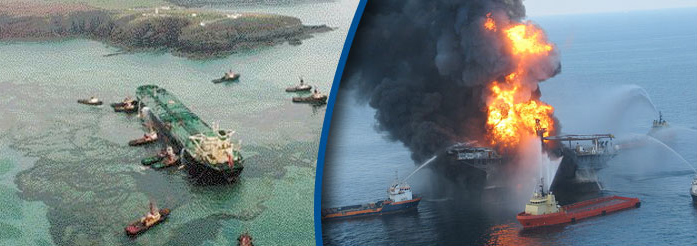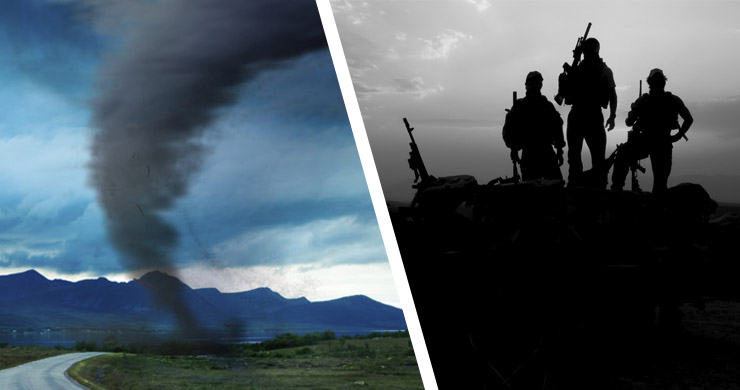KS3: The BP Oil spill; KS2 :The BP Oil spill
What if it had happened in Wales?
On 20 April 2010, in the Gulf of Mexico, there was an explosion on the BP oil rig called Deepwater Horizon. It killed eleven crew members and began the greatest environmental disaster in United States' history.
In July 2010, the broken pipe 1 km underwater was still leaking oil at 25 litres per second (or about 7000 tonnes a day!).

The Sea Empress and Deepwater Horizon
On 5 August 2010, after 800 million litres had escaped, they said that the leaking oil had been stopped.
So what happens to the oil?
Has anything similar happened in Wales?
Because of the distance between us here in Wales and the Gulf of Mexico, it's difficult to understand just how big the disaster is. To help us, let's compare it to Wales' own oil disaster.
On 15 February 1996, just outside the port of Milford Haven on the edge of the Pembrokeshire Coast National Park, the Sea Empress oil tanker hit some rocks and lost at least 71,000 tonnes of crude oil into the sea.
The oil spill spread itself along the south–west Wales coastline and the important wildlife reserves and tourist attractions between St. David's in the west and Carmarthen Bay to the east.
Have a look at the map below to compare the Sea Empress disaster to the Deepwater Horizon disaster. Select the name of the oil spill.
Every 10 days during May, June and July 2010 the quantity of new oil in the Gulf of Mexico was around the same amount as all the oil in the Sea Empress disaster.
By August 2010, the quantity of oil polluting the deep ocean was equivalent to 13 Sea Empress disasters.
The scale of the pollution has been made worse by the time the oil has had to spread out. Also, summer hurricanes are likely blow it over oil protection booms onto the wildlife-rich south coast of the USA. Only when we consider all this can we fully understand why the American people and government are so angry.
Did you know?
We've all heard about Ordnance Survey Maps - but what does 'Ordnance Survey' mean? It's a really odd name for a mapmaking organisation!
The name the organisation comes from its original military purpose. Ordnance is the word used in the army for the section dealing with military supplies. The roots go right back to 1747, when King George II wanted a military map of Scotland to help his troops fight the Scottish clans.
Also, during the Napoleonic Wars in the late 18th and early 19th centuries when there was a threat of invasion from France, it was decided that a complete and accurate map of the whole of the country was needed. This is how the government department called the Ordnance Survey began.


